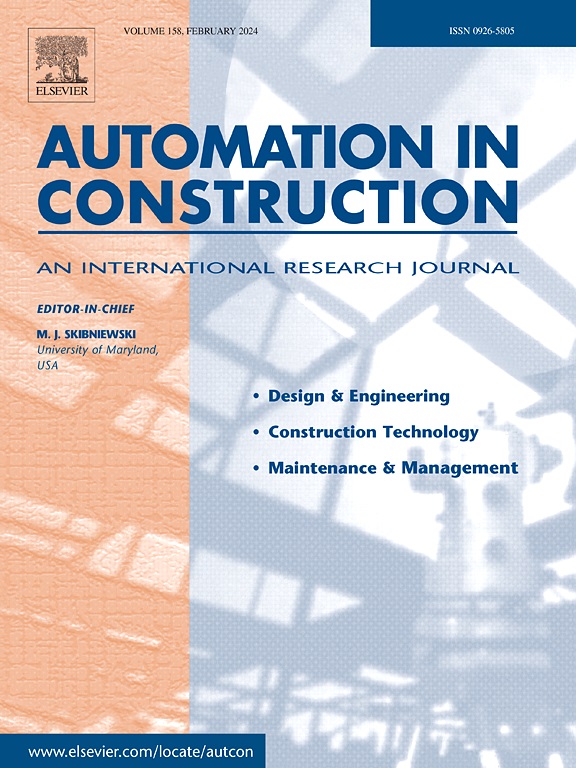Image-based scan-to-BIM for interior building component reconstruction
IF 9.6
1区 工程技术
Q1 CONSTRUCTION & BUILDING TECHNOLOGY
引用次数: 0
Abstract
Image-based scan-to-BIM is a cost-effective and accessible solution for generating digital models of real-world environments. However, its indoor application remains challenging due to cluttered occlusions, complex geometries, and various surfaces. This paper develops a photogrammetry and instance segmentation-integrated approach for image-based interior building component reconstruction. Specifically, the approach consists of (1) boundary surface modeling by integrating vertical surface representations and concave polygons, (2) semantic mapping of building components between 3D point clouds and 2D images using learning-based instance segmentation and camera projection, and (3) boundary refinement based on hole and color features for optimizing elements' geometries. The approach is validated using six interior scenes, which shows around 60 % reduction in geometric deviations (56 mm) compared to existing approaches, with mean intersection-over-union ratios of 82 %, 78 %, and 72 % for doors, windows, and lift openings. The approach provides centimeter-level accuracy using commonly available devices, striving to broaden the application of image-based scan-to-BIM.
求助全文
约1分钟内获得全文
求助全文
来源期刊

Automation in Construction
工程技术-工程:土木
CiteScore
19.20
自引率
16.50%
发文量
563
审稿时长
8.5 months
期刊介绍:
Automation in Construction is an international journal that focuses on publishing original research papers related to the use of Information Technologies in various aspects of the construction industry. The journal covers topics such as design, engineering, construction technologies, and the maintenance and management of constructed facilities.
The scope of Automation in Construction is extensive and covers all stages of the construction life cycle. This includes initial planning and design, construction of the facility, operation and maintenance, as well as the eventual dismantling and recycling of buildings and engineering structures.
 求助内容:
求助内容: 应助结果提醒方式:
应助结果提醒方式:


